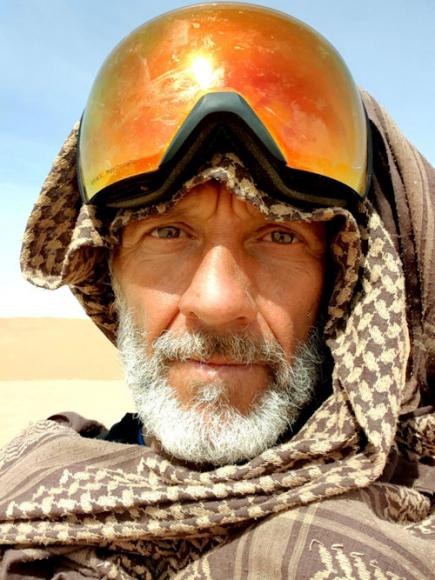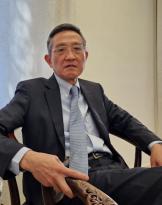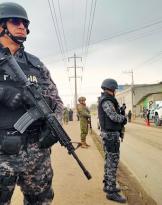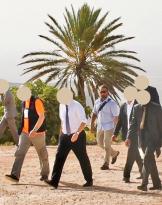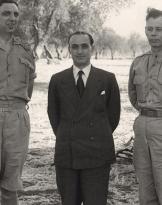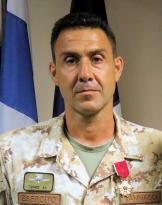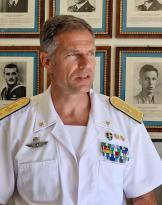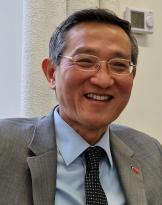Former Alpine crosses the desert of the Empty Quarter alone! The largest stretch of sand in the world, Rub 'al-Khali, was traced by our compatriot Massimiliano "Max" Calderan, so much so that now the new track is called "Calderan Line".
The venture was completed solo, covering 1100 km of sand in Saudi Arabia, from Najrān (near the border with Yemen) to the border with the United Arab Emirates, in 18 days (from January 16 to February 2) in almost extreme conditions.
Max, born in '67, from Portogruaro (VE), is a former Alpine climber. He won the 1991 military Pentathlon and graduated in Sports Science. Decorated for civil value by the President of the Republic Francesco Cossiga. UN ambassador for the protection of the Asian cheetah. He is a writer of sports manuals and an extreme desert explorer. He speaks Arabic fluently and in the deserts he calls himself Al Madhi ("Well Guided").
Max, made the Alpine and was a military Decathlon champion. What memories do you have of that period?
One of the most beautiful times of my life. After the CAR (Recruit Training Center) I joined the sports groups. Training in nature while maintaining military discipline. The spirit of belonging to the Alpine Corps has cemented relationships with my "brothers" who, after more than 30 years, are still in my heart.
How did the passion for the desert come about?
I was 7 years old. My mom had bought an encyclopedia. Leafing through the volume dedicated to geography, I was enchanted by a photo of the Rub Al Khali desert located in Saudi Arabia. From that moment, it was 1974, I decided that I would explore it. I was intrigued by the fact that it was written that even the camels did not cross it. I wanted to find out the reasons. After 46 years of reading and 1.100 km of solo walking exploration I traced the "Calderan Line" for the first time.
Has being alpine helped?
Surely! And not only in sport, but also in life. When you grow and mature following the rules learned in the Alpini, inside you remain the aptitude for discipline intended as taking care not only of yourself but also of others, respecting roles and skills without depriving yourself of your opinions.

Based on this acquired structure, I personalized my entire path, even as an explorer, making use of much of what I learned during my stay with the IV Alpine Army Corps.
Have you developed specific training techniques?
I have specialized over the years, based on scientific solidity, in the deprivation of food, water and sleep. After about ten years working in the pharmaceutical sector and after opening a laboratory of genetic analysis and intenstinal microbiome, I was able to put all my experience to good use, which is now a method that can be applied by anyone to improve health and well-being. .
Can these techniques also be used by the military?
For the military sector there are specific programs, especially for the special forces which are subjected to a greater load of stress. And this is the case above all for those who work in conflict areas, such as the Middle East, or for those who must be operating 24 hours in contexts of protection or continuous surveillance.
Do you use special materials for your businesses?
Personalized clothing specially prepared by Montura from the mountain rescue clothing. Other equipment (torches, binoculars, etc.) of military origin however applied to civilian use.
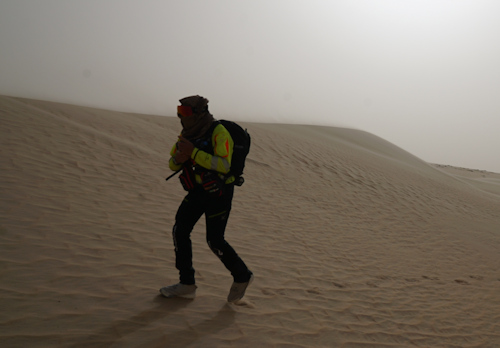
What kind of shoes do you use? Do they have a special sole for running on the sand?
Shoes slightly modified and reinforced both as `` glue '' on the soles and as removal of some parts that I can exert, during continuous efforts, abrasions to the Achilles tendon or pressure on the toes. No particular insole. Usually I take them off and stay "barefoot" inside the shoe. I remember that I am not running on the sand, because it is not a race but an exploration. The goal is to survive in order to tell. Nothing is left to chance and shoes are an important element.
What kind of feeding do you adopt?
Organic at least 90-95% both during an exploration and in everyday life. Low or zero carbohydrates (0 to 15% of the daily total), meat once a week, fruit only in the morning, legumes, vegetables and nuts. All according to a personalized program that I have been following for at least 30 years. Everything started from the time of the University and based on my genetic and hormonal predispositions, also taking into account the intestinal bacteria. I don't use supplements, bars or similar.
Water: it is important to know what medicine and physiology says about hydration. But we often forget to be unique. Each of us is unique. Personally, I refuse to belong to a statistical average, regardless of what is written in the survival manuals. Every year in the height of summer one of the routine workouts in the United Arab Emirates in the height of summer (temperatures between + 50 C and +60 C during the day) is to cover 100 km on the sands, without drinking, without eating and without sleep in less than 24 hours and in total solitude without supports of any kind (car, satellite, backpack). It is a workout that I do every 15 days for at least 4 times. I am not unconscious but I know my body well.
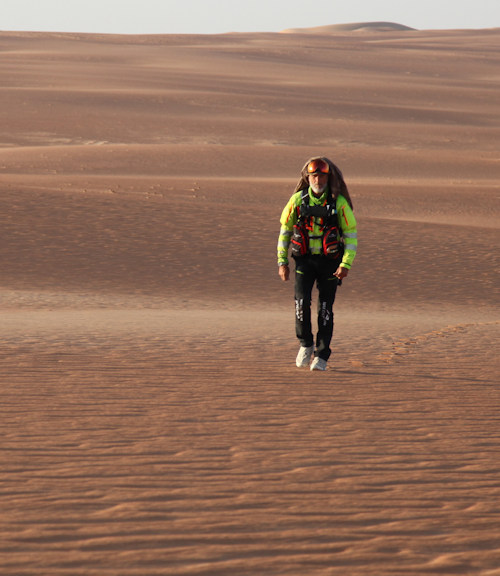
15 years ago I founded a laboratory of genetic analysis and intestinal microbiome (and not only) and since then combining my decades of experience in the pharmaceutical sector with that of research I have developed a method that allows me to do what apparently seems impossible.
The desert is sand. The alpino moves between rocks and woods. Doesn't it seem a contradiction?
Absolutely not! Opposites attract. Nature knows no boundaries. I couldn't fall in love with the desert if I hadn't loved the mountain before.
Sportily I trained with extreme climbing, extreme skiing, ski mountaineering, ice falls and let's talk about the 80s ... without internet and YouTube where you can get information and study. Pioneer (and then yes unconscious) together with a few others of the time much more famous and prepared.
Do you use survival techniques?
None. To survive you just have to be able to command your body at will, bend it at will in absolute deprivation. Once this is done, each technique is worth the other.
How does it manage risk with dangerous animals like snakes and scorpions?
It is I who represent a risk for them! I always think backwards.
However, knowing their habits and training to live with them reduces all risks to 99.9%. I accept the fact that they are indifferent to my knowledge and my presumption of being able to manage everything based on my experiences and what is written in the books on the subject of dangerous animals. Of course, a scorpion can make it walk on my face. I can take a snake hidden in the sand with my bare hands. But for what then ... only personal gratification.
I therefore accept the fact that I am at their home and I at my home at that moment. Mutual respect.
What is the baggage you carry with you and how much does it weigh?
About 18-24 kg depending on the water contained. Medicines (antibiotics - pain relievers - anticoagulants - adrenaline in case of anaphylactic shock). Solar panel for recharging batteries, water, food. Satellite phone, gps, mirror, whistle, mini knife, adhesive tape, some electrician clamp. Ultra light sleeping bag. Sunglasses and protective mask in case of strong wind or sandstorms.
And a lot of patience ...
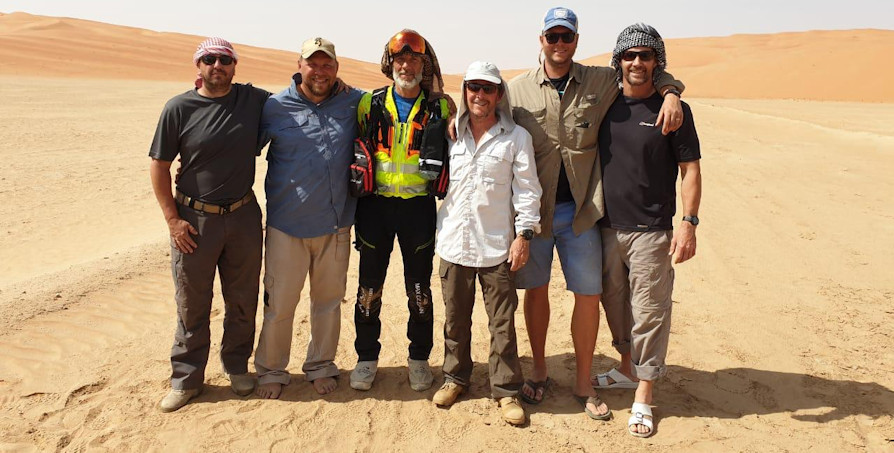

Photo: Massimiliano Calderan

